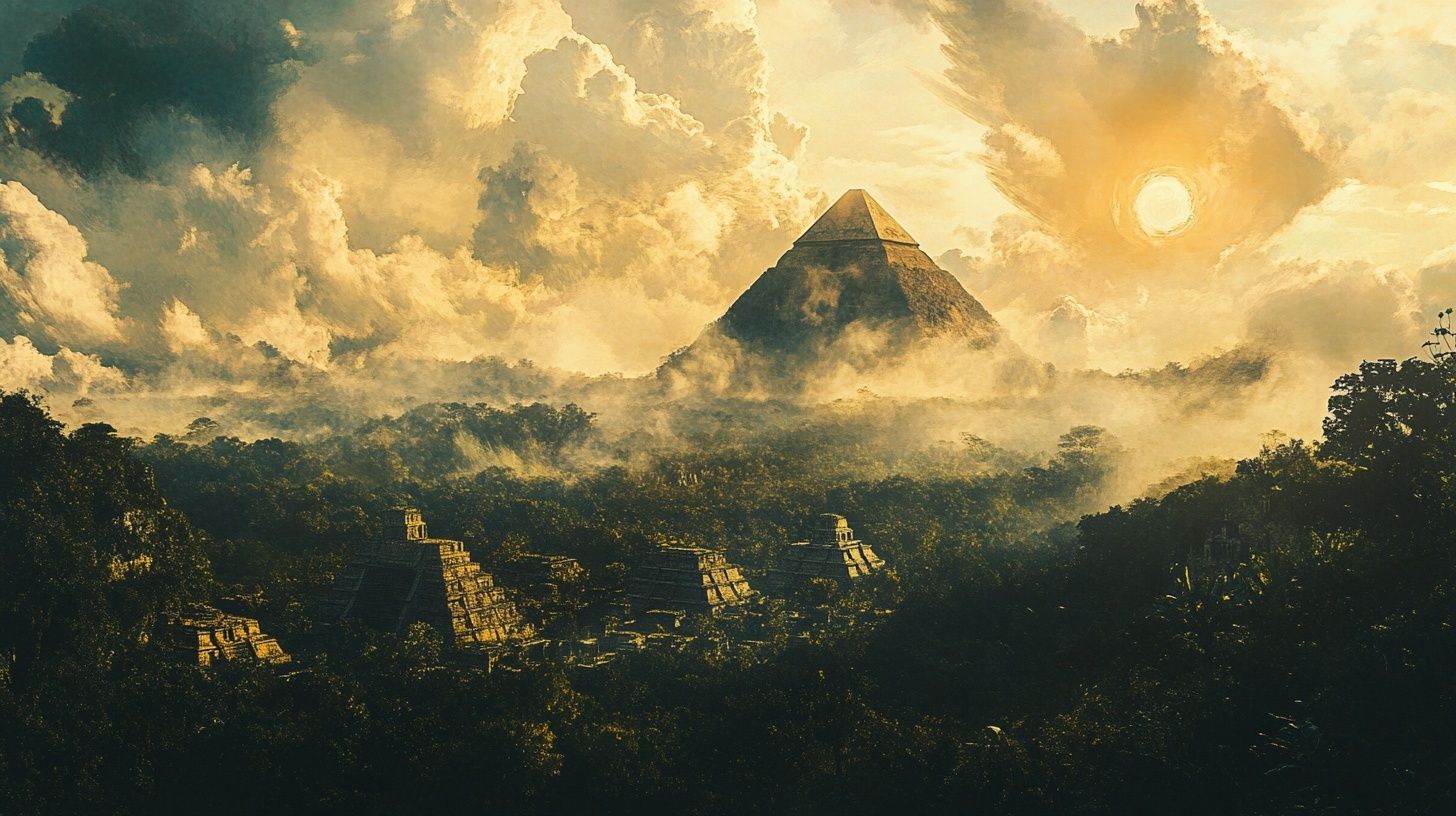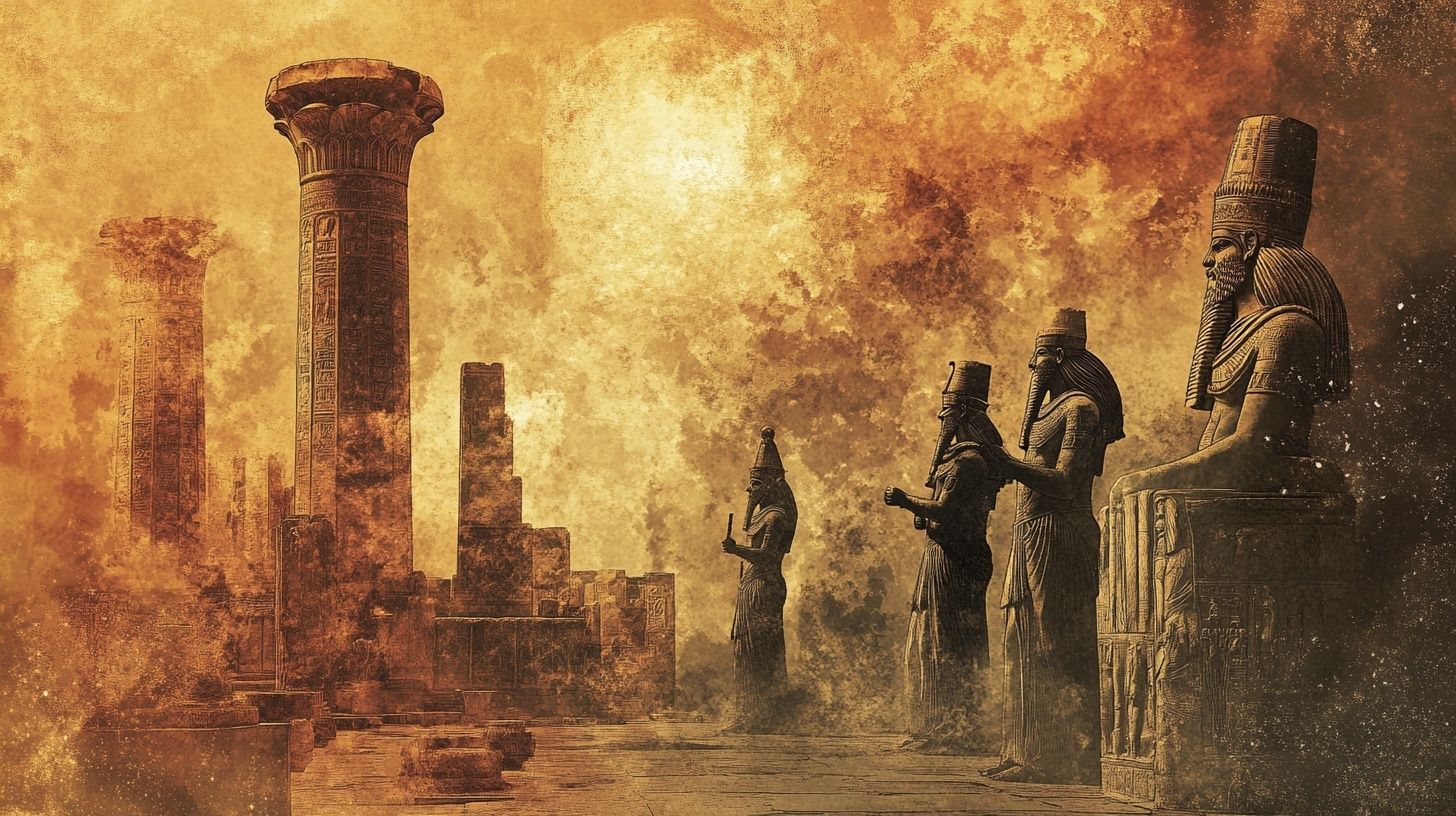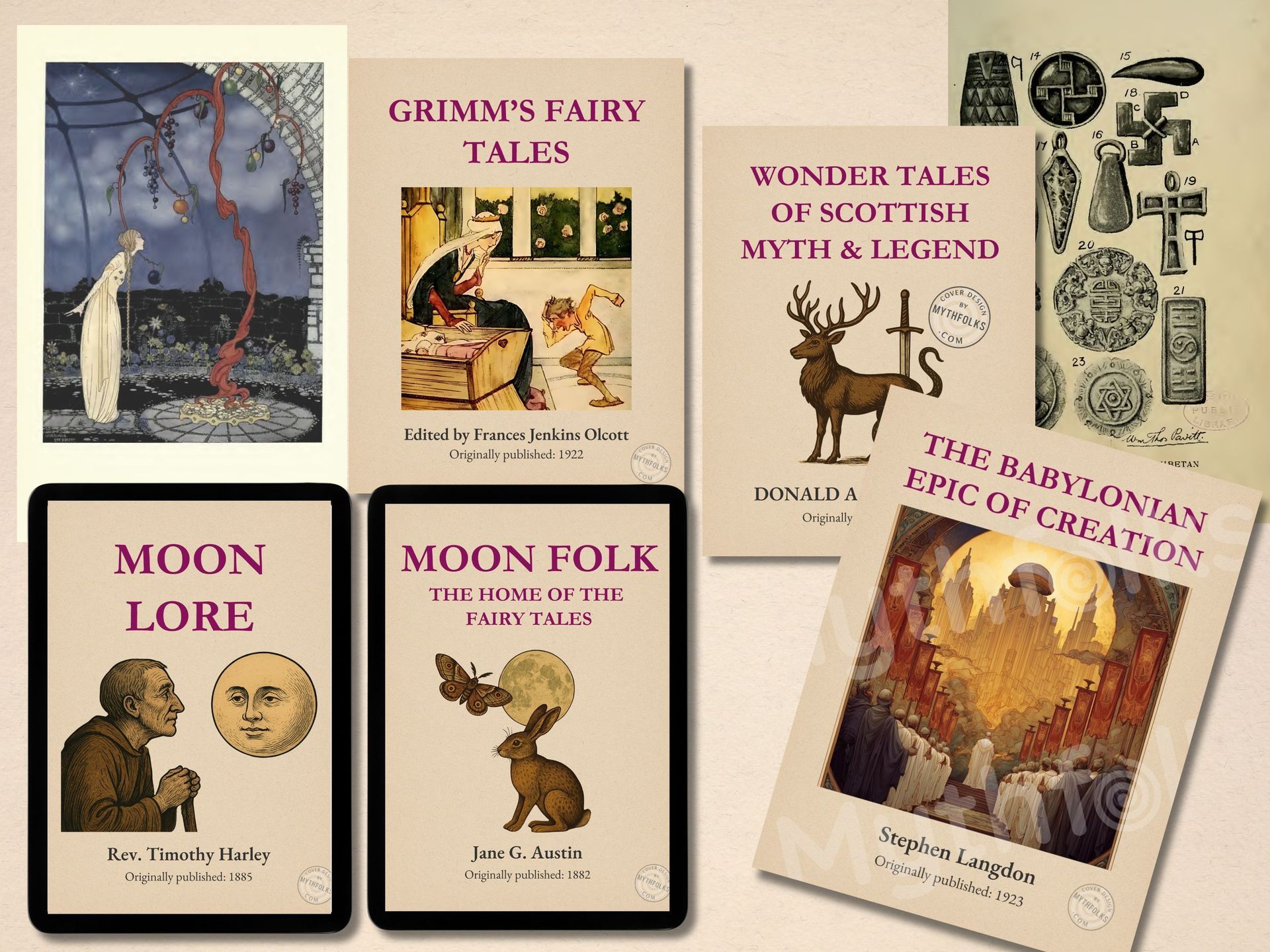Who are the ancient Maya gods & goddesses?
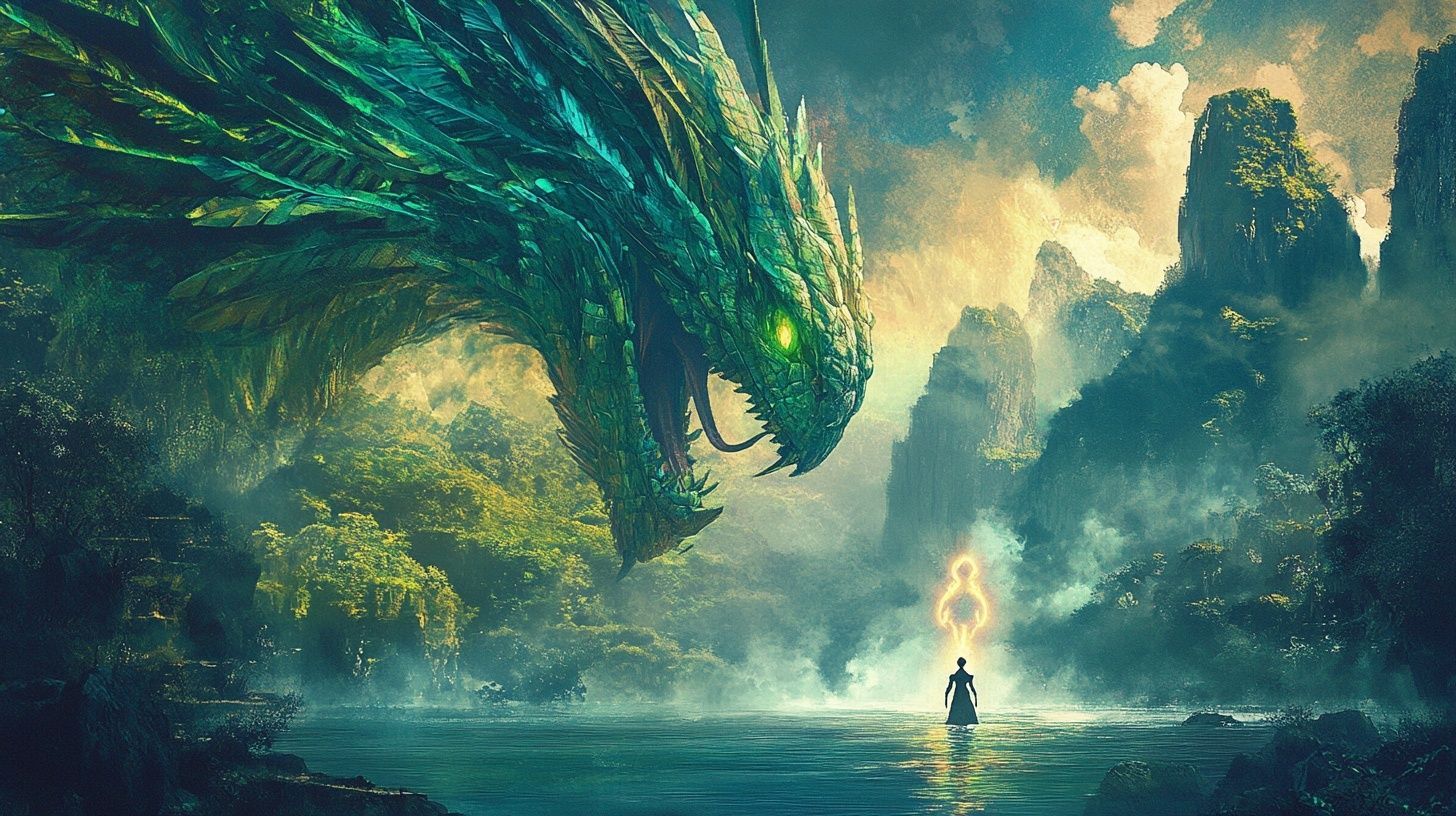
The Maya civilization - like all ancient civilizations - possessed a complex religious world, with a pantheon of gods & goddesses that scholars today are still working to fully understand.
Our knowledge mostly comes from a few surviving books (like the Popol Vuh, the most well-known Maya creation story), intricate carvings and painted pottery.
Many figures and concepts are subject to lively scholarly debate - and what would folklore be without this!
Here's a wrap up of some of the better known Maya deities and a couple of long shots thrown in for good measure.
Published: 4th Oct 2025
Author: Sian H.
The original creator gods
These foundational gods were involved in the creation of the cosmos. There are multiple creation myths so different Mayan traditions identify different creators - these are some of the main ones and one that's more obscure.
Tepeu and Gugumatz – the makers:
In the creation story of the K'iche' Maya's sacred book, the Popol Vuh, these two gods work together to bring forth the world from a primordial sea and sky. Tepew is a sky god, while Gugumatz is the Feathered Serpent, a divine figure also seen in other Mesoamerican cultures (like the Aztec Quetzalcoatl).
Ixmukane and Ixpiyakok – the grandparents:
Also from the Popol Vuh, this divine couple are the ancestors who help in the final stages of creation. Ixmukane, in particular, is credited with grinding the maize that formed the flesh of the first true humans.
The Paddler Gods:
A lesser-known pair - the Paddlers are a pair of elderly Maya deities who usually appear together, one has jaguar-like features and his companion is a fish-like god distinguished by a stingray spine pierced through his nose.
While known in mythology for rowing the Maize God’s canoe, their primary role was overseeing the critical Period Ending ceremonies that marked the end of calendar cycles.
Their authority came from the belief that they had performed the very first of these rituals at the beginning of time, setting the divine precedent that all Maya kings had to follow.
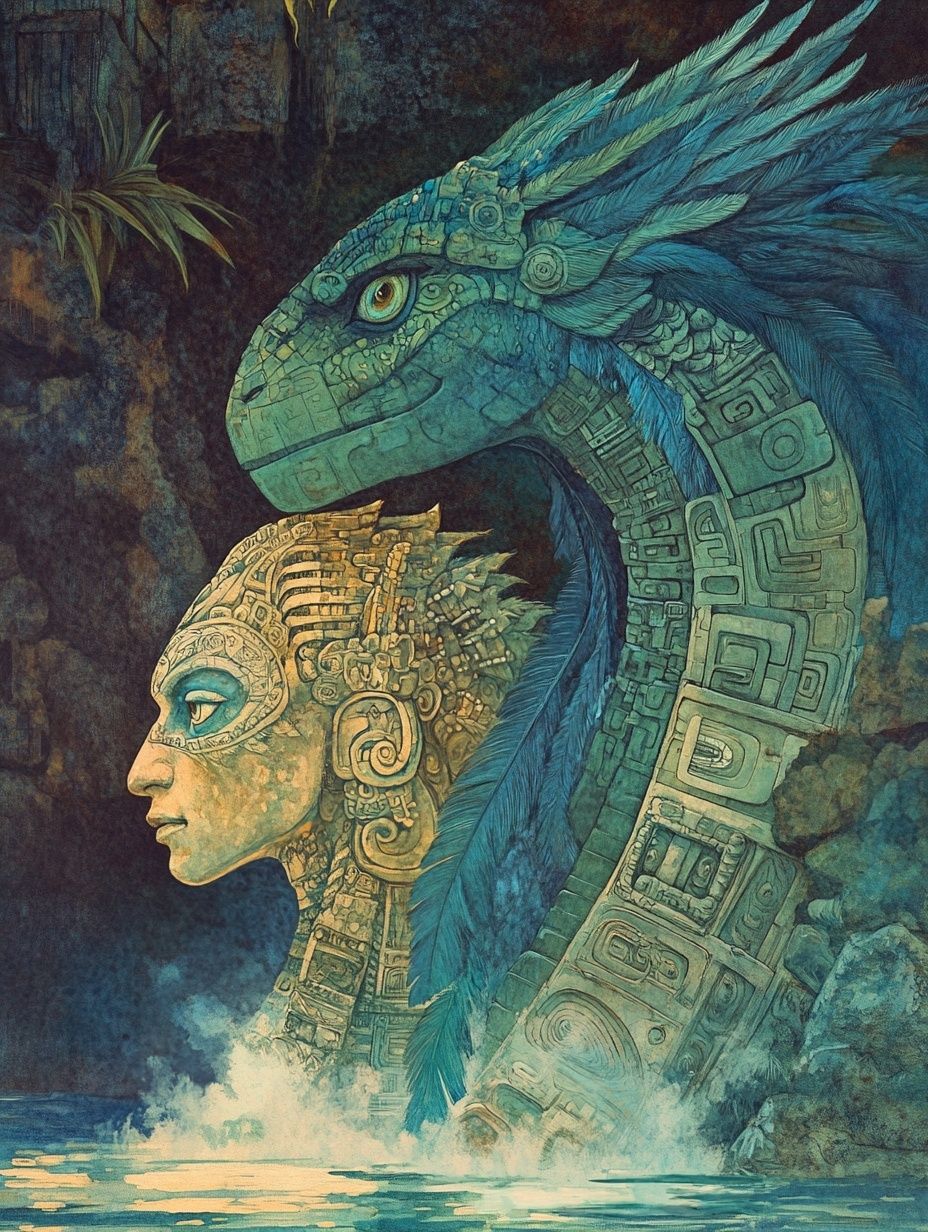
The great gods
These were powerful, widely recognized deities who governed the fundamental forces of the world.
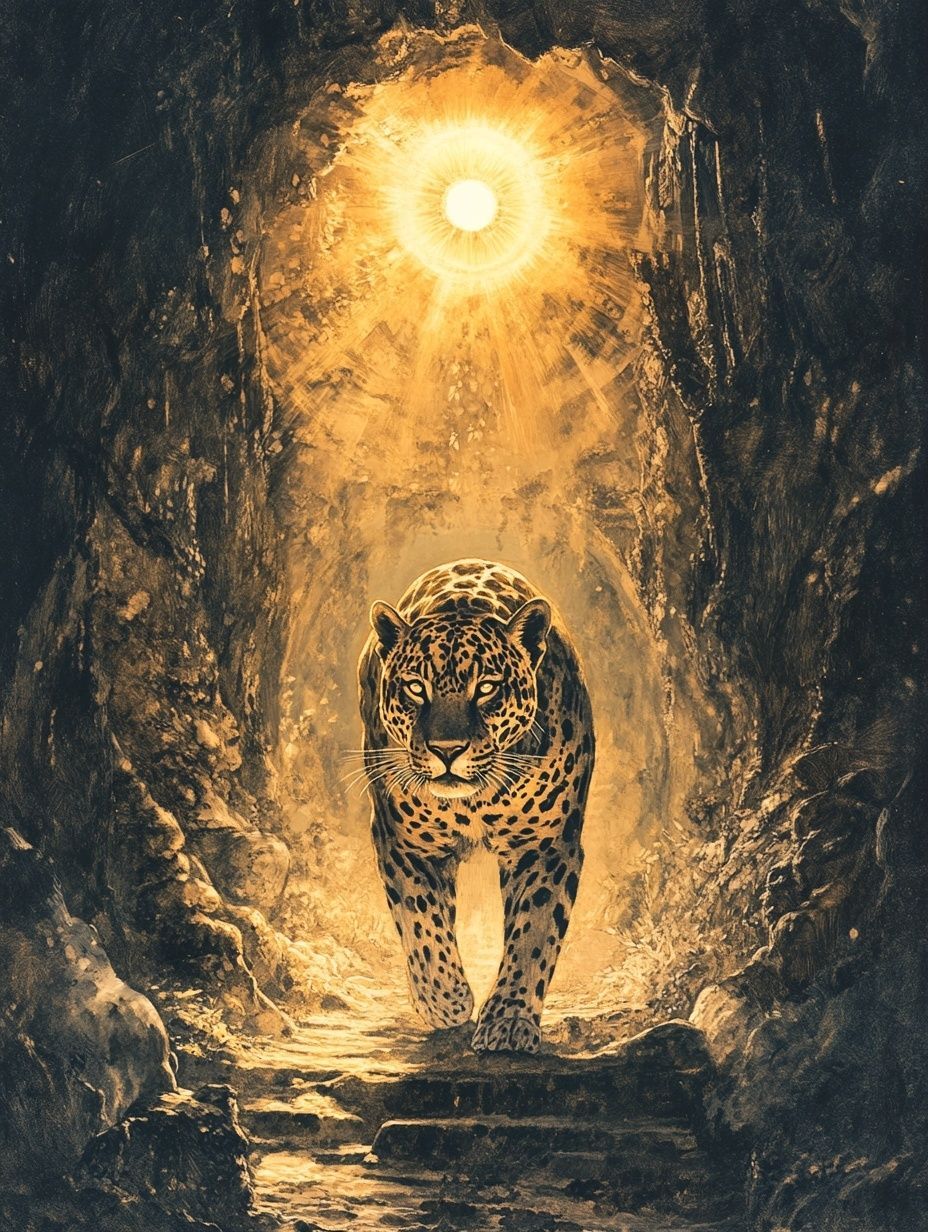
Itzamna – the supreme god of knowledge:
One of the most important deities, often depicted as a wise old man, Itzamna was a creator god who presided over the sky, writing, and the calendar. He was a primary god of the ruling elite.
Ix Chel – the complex goddess of weaving, childbirth & the moon (sort of):
A powerful and dualistic goddess. On one hand, she is the patroness of weaving, childbirth and medicine. On the other, she has a terrifying aspect as a destructive old woman who causes floods.
While popularly called the Moon Goddess, this identification is a modern oversimplification; the Moon Goddess in Classic art is consistently a young maiden, a very different figure from the aged crone most often identified as Ix Chel. Scholars now believe they may represent two aspects of a broader lunar concept (the waxing and waning moon).
Kinich Ajaw – the sun god:
Kinich Ajaw is the personification of the sun, often depicted with large square eyes, a prominent nose and the Mayan glyph for "sun" on his body.
His nightly journey through the darkness of the underworld saw him transform into the Jaguar God, a powerful and dangerous predator that represented the sun's hidden, nocturnal aspect. Because of this great power, Mayan rulers frequently associated themselves with him to legitimize their authority.
Chac – the rain, thunder & lightning god:
Chac is the powerful Maya god of rain and storms, making him one of the most important gods for an agricultural society. He's instantly recognizable in Maya art by his reptilian features, a long, curling nose or snout, and fangs. He often carries a lightning axe, which he uses to strike the clouds and produce rain.
Gods of human life & patronage
K'awiil – god of royalty & lightning:
K'awiil is the god of royalty and abundance, representing the essence of the divine bloodline. He's instantly recognizable in art, as one of his legs is a serpent and he often has a smoking object, like an axe or torch, piercing his forehead.
Scepters were carved in his form, and the passing of the "K'awiil Scepter" from one king to the next was a key moment in legitimizing the new ruler's power.
Yum Kaax – the maize god:
Yum Kaax is the personification of the maize plant, the most vital crop for the Maya. He's usually shown as a youthful and idealized figure, often with an elongated head shaped like an ear of corn and hair flowing like corn silk.
His mythology follows a cycle of death and rebirth that mirrors the agricultural seasons and his survival often depends on protection from other gods, particularly Chac, the rain god.
Tojil - patron god of the K'iche':
A primary god of the K'iche' Maya, Tojil was a deity of fire, sun and sacrifice, and an important figure in the Popol Vuh. Iconographically, he's often equated with the classic Maya god K'awiil, sharing his distinctive serpent leg and an object piercing his forehead.
His foundational pact with the K'iche' people - providing them with fire in exchange for their loyalty and hearts - established both their dominance over other tribes and the central role of sacrifice in their worldview.
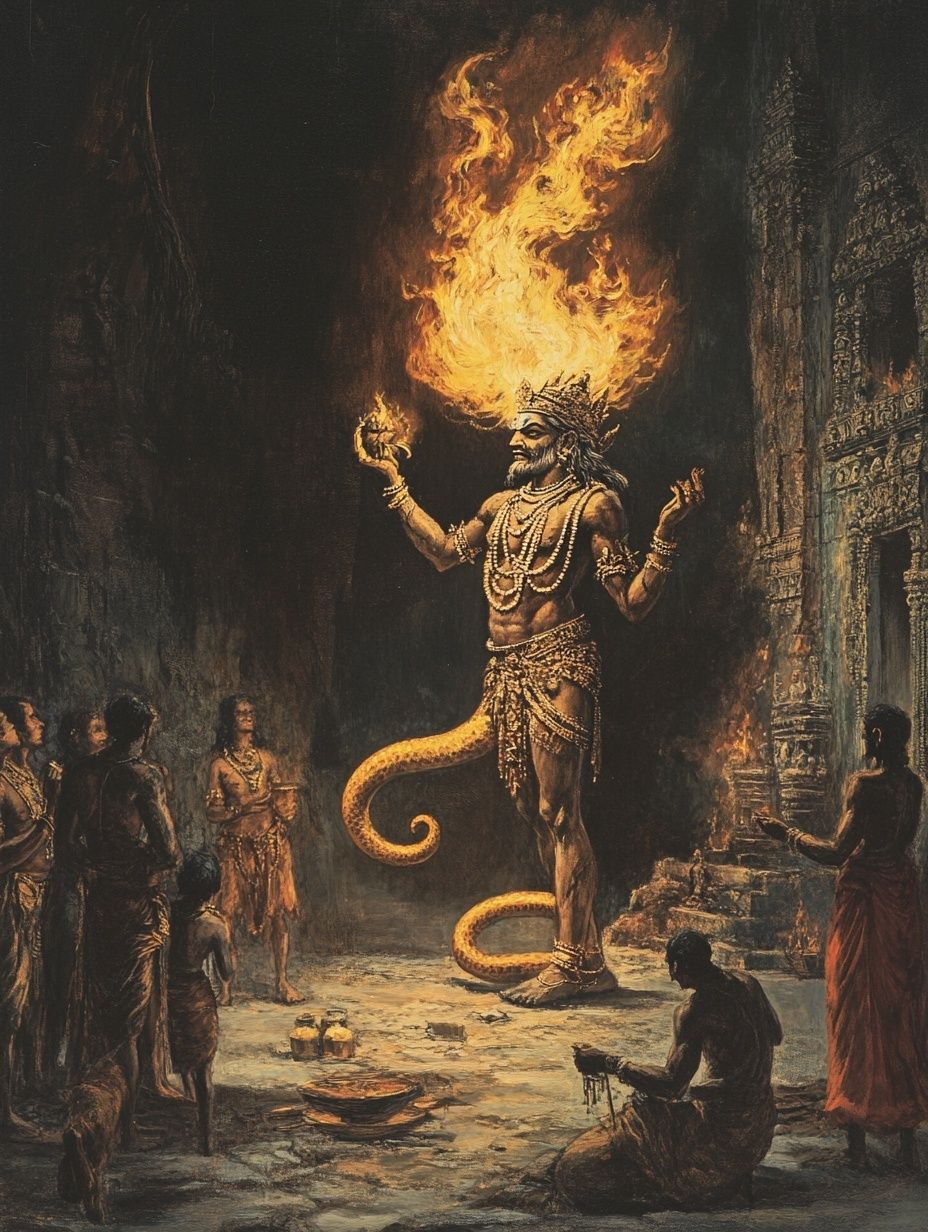
Kukulcan - god of the wind:
Portrayed as a great feathered serpent, Kukulcan was the god of the wind and worked closely with Chac to bring the life-giving rains. He was also a patron of the ruling families and some historical figures even took his name as a title, leading to a lasting confusion between the god and human heroes.
The hero-gods of the cosmos
Some figures in Mayan mythology begin as heroes and undergo a divine transformation, or apotheosis, to become a fundamental part of the cosmos.
The Hero Twins: Hunahpu and Xbalanque:
The central protagonists of the Popol Vuh. They're heroic figures who, after a series of trials and defeating the lords of the underworld, undergo a divine transformation, ascending to become the Sun and the Moon.
Gods of the underworld and death
The Mayan cosmos included a terrifying underworld known as Xibalba, as well as deities who personified death.
Ah Puch – god of death:
A primary death god, often depicted as a skeletal or decaying figure. He was believed to stalk the sick and injured, waiting to take their souls to Xibalba.
Ix Tab – the rope goddess:
Known from later Yucatec beliefs, Ix Tab is associated with suicide by hanging and is often depicted with a rope around her neck. Her exact role and the nature of her worship are still debated by scholars.
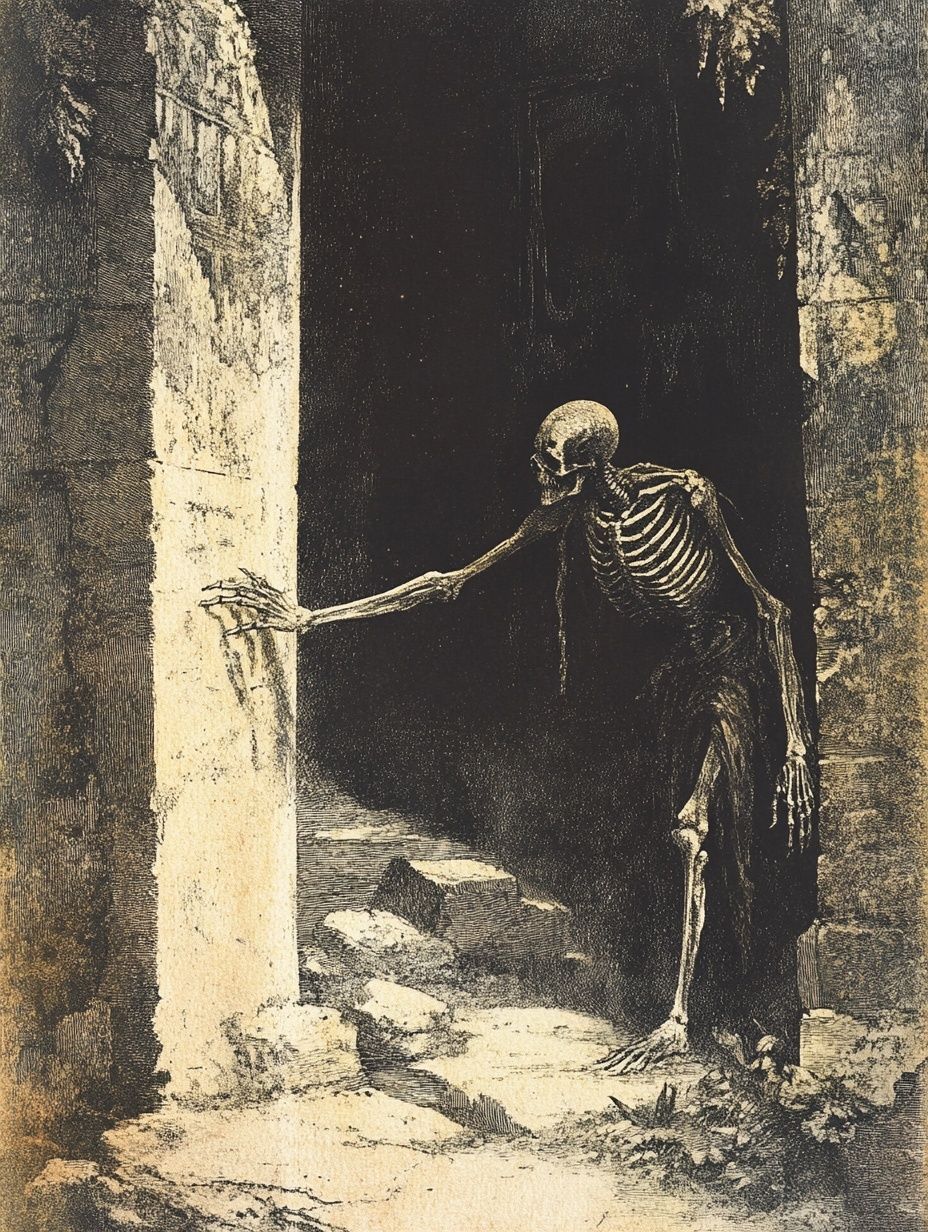
The gods and goddesses of the Maya pantheon largely contain a similar set of characters as other ancient civilizations like those of Mesopotamia. But of course they also come with their very own unique nuances and stories, and that's only scratching the surface. Underneath are stories that are filled with particular and distinct details left for us by these ancient peoples of Mesoamerican - details we're still figuring out today.
Check out more on Maya and other deity stories below.
Article sources
- Tedlock, Dennis, trans. Popol Vuh: The Definitive Edition of the Mayan Book of the Dawn of Life and the Glories of Gods and Kings. New York: Simon & Schuster, 1996.
- Christenson, Allen J., trans. Popol Vuh: Sacred Book of the Maya. Norman: University of Oklahoma Press, 2007.
- Coe, Michael D. The Maya. 8th ed. London: Thames & Hudson, 2015.
- Schele, Linda, and David Freidel. A Forest of Kings: The Untold Story of the Ancient Maya. New York: William Morrow, 1990.
- Sharer, Robert J., and Loa P. Traxler. The Ancient Maya. 6th ed. Stanford: Stanford University Press, 2006.
- Taube, Karl A. The Major Gods of Ancient Yucatan. Studies in Pre-Columbian Art and Archaeology, no. 32. Washington, DC: Dumbarton Oaks, 1992.
- Miller, Mary, and Karl Taube. An Illustrated Dictionary of the Gods and Symbols of Ancient Mexico and the Maya. London: Thames & Hudson, 1993.
- Houston, Stephen D., David Stuart, and Karl Taube. The Memory of Bones: Body, Being, and Experience among the Classic Maya. Austin: University of Texas Press, 2006.
You might also like


